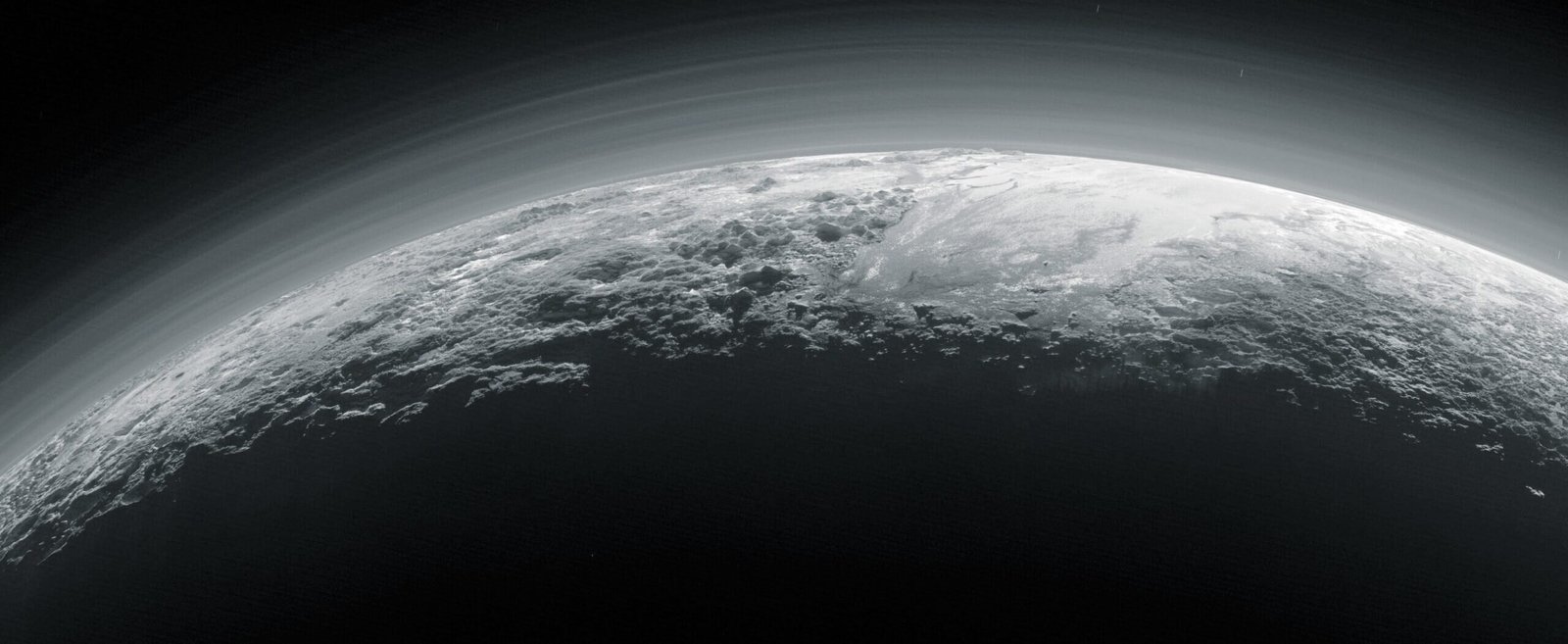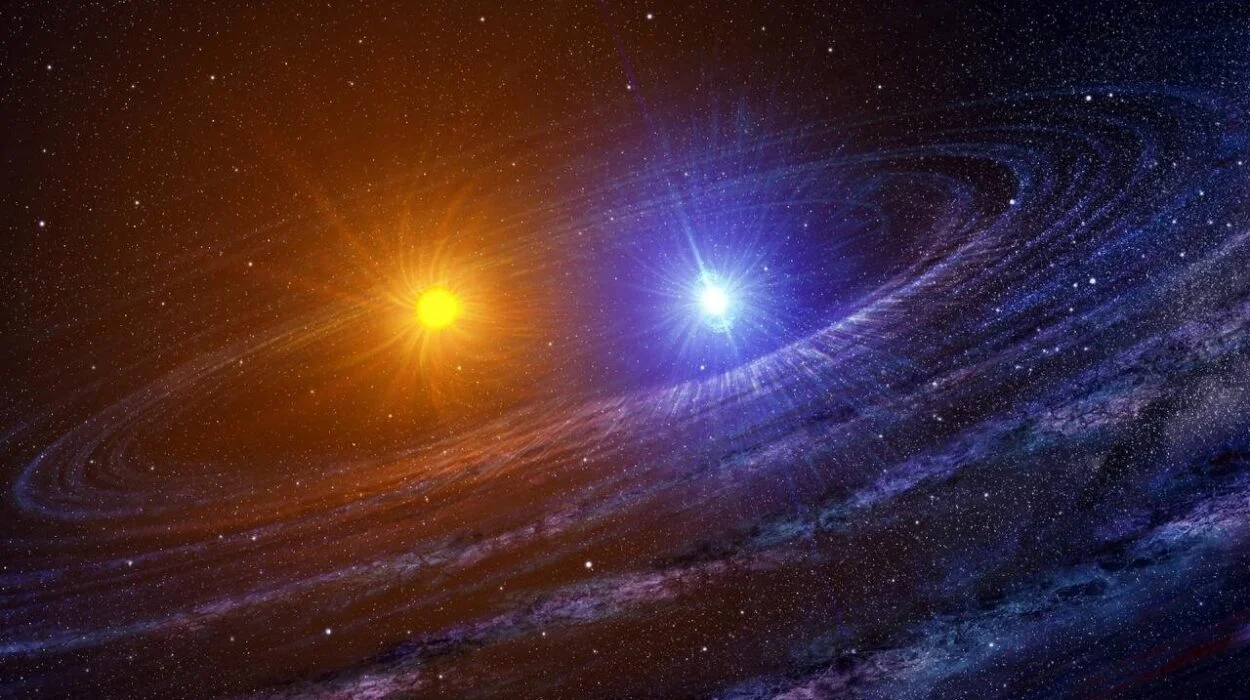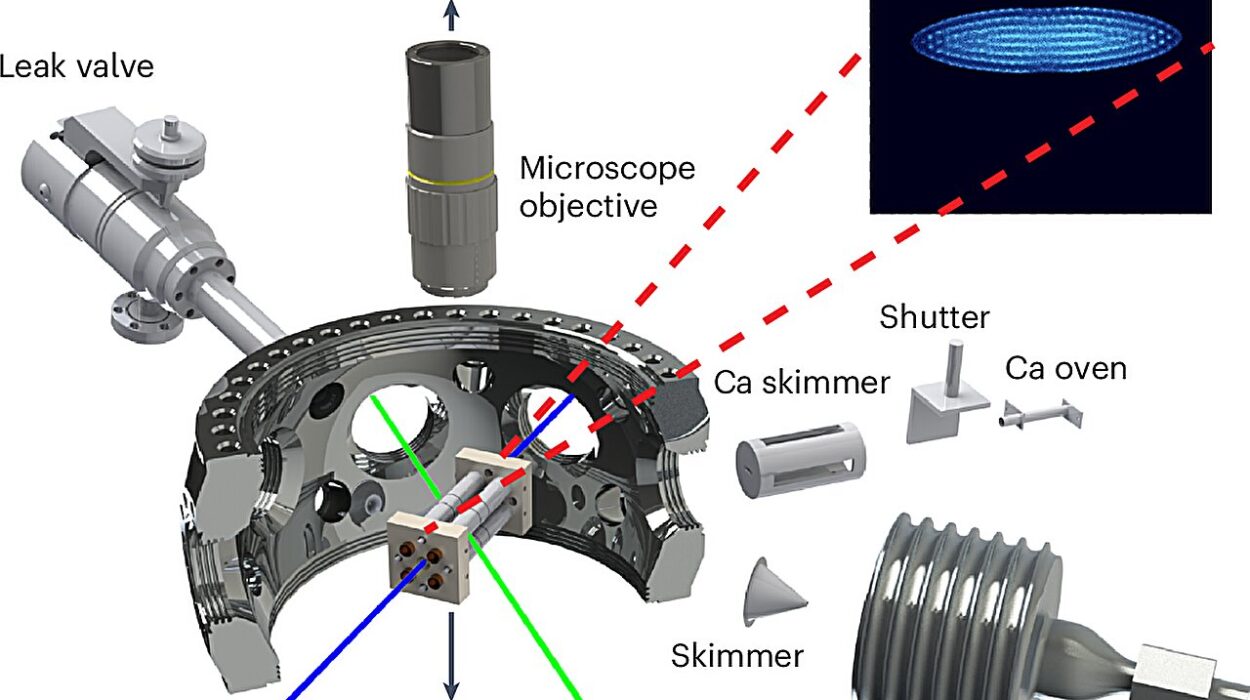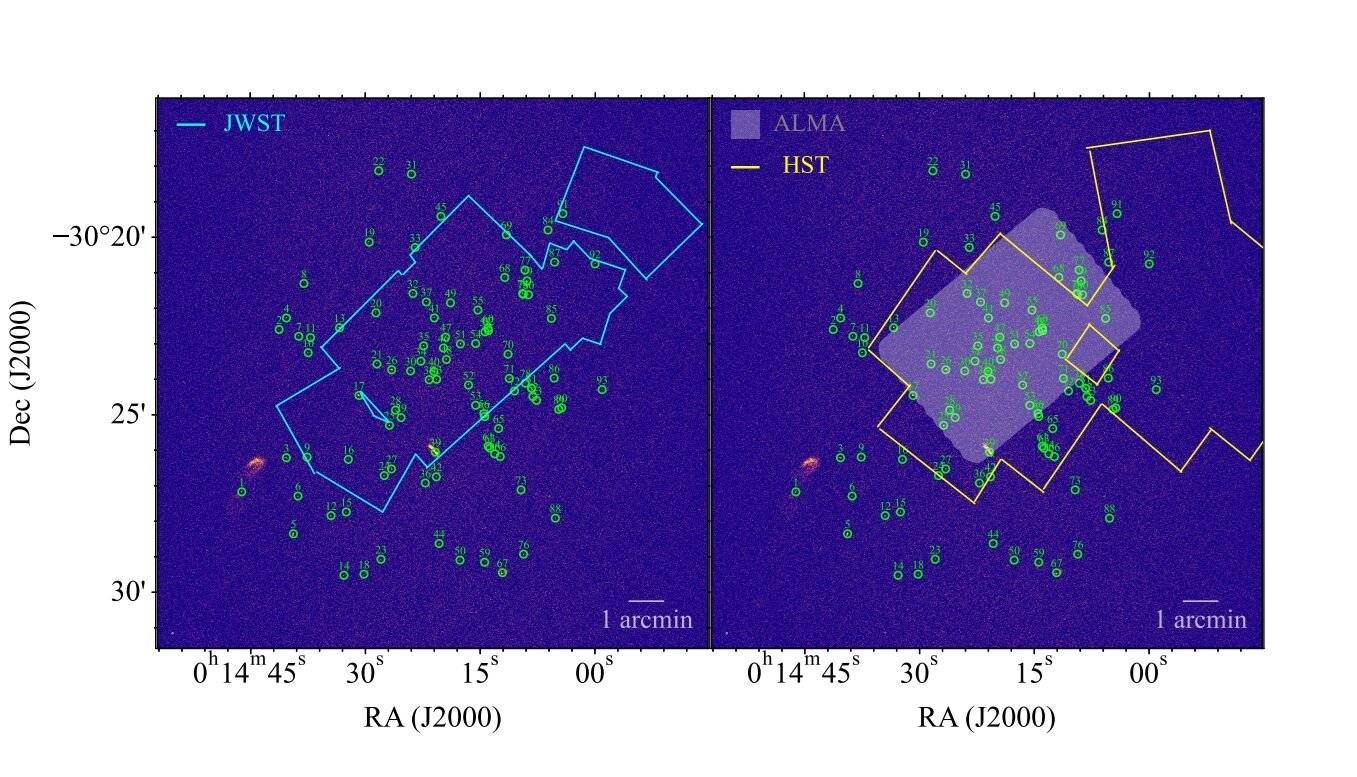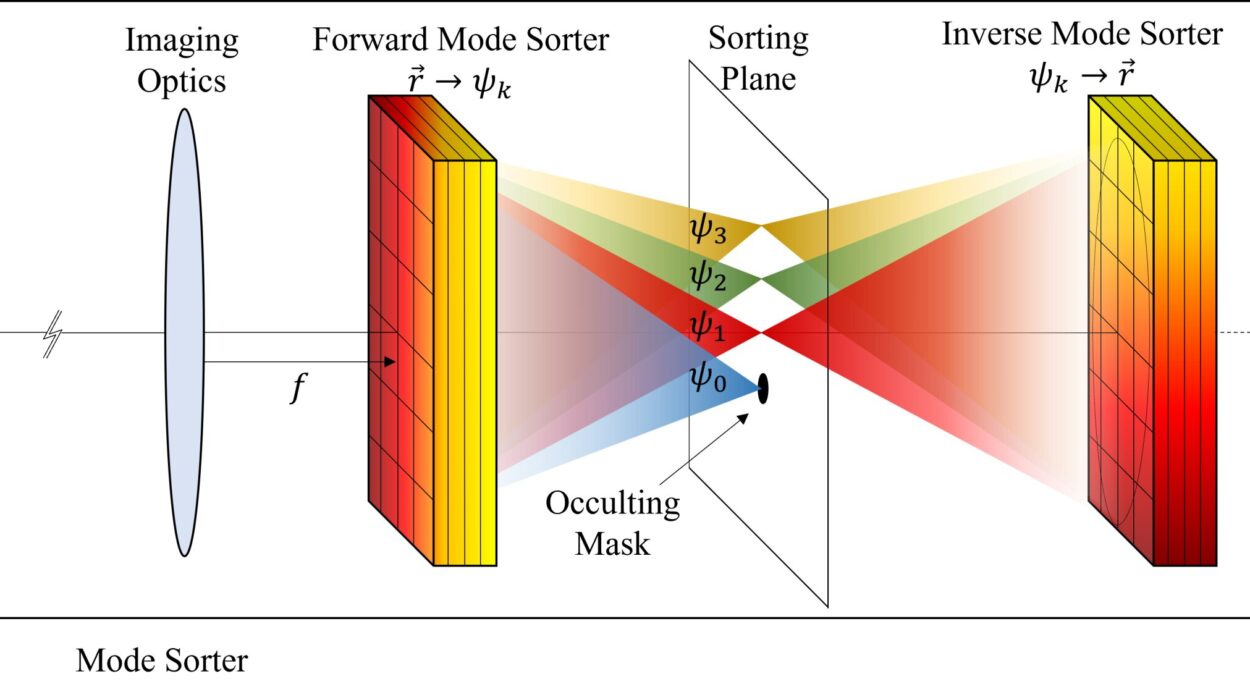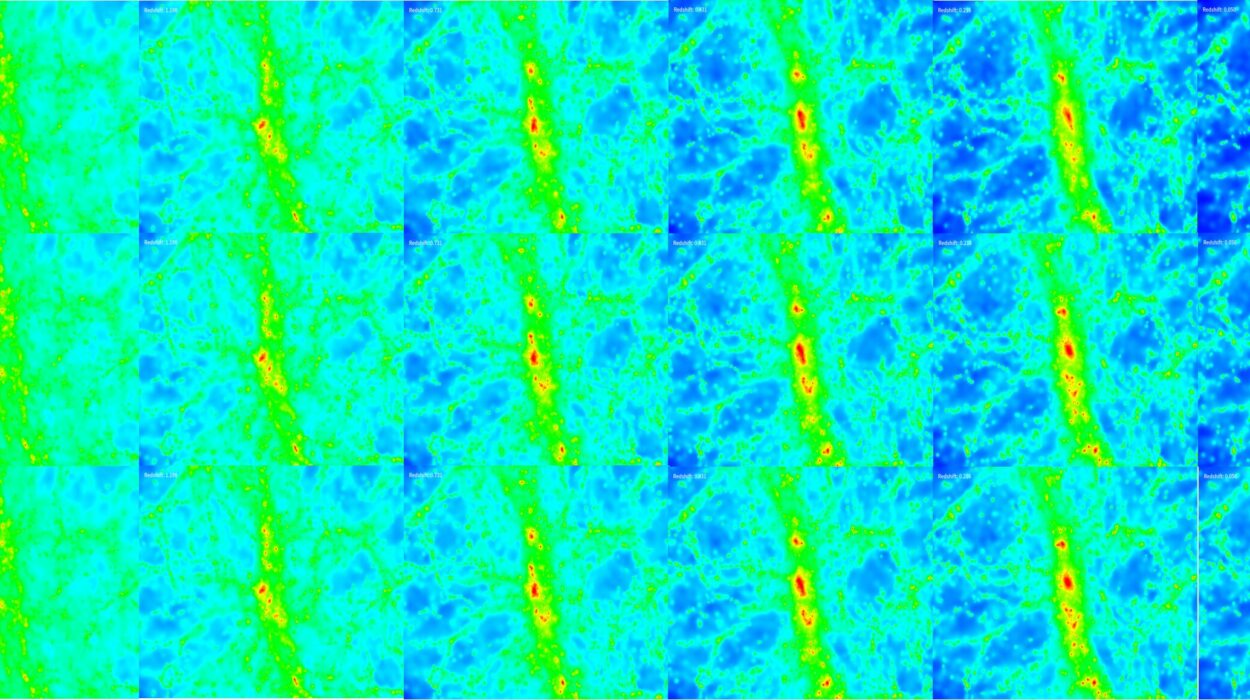When the James Webb Space Telescope (JWST) turned its powerful gaze toward the icy outskirts of our solar system, it caught a planet—or rather, a dwarf planet—revealing secrets that had been quietly unfolding for eons. Pluto, the distant, enigmatic orb once hailed as the ninth planet, is no frozen backwater. Instead, it’s a dynamic world with volatile weather, strange geological rhythms, and a mysterious, whisper-thin atmosphere that—unlike anything else we’ve seen—leaks ghostlike tendrils into space, only to settle on the surface of its loyal moon, Charon. This atmospheric exchange, detailed in a series of groundbreaking papers published in Nature Astronomy in spring 2025, has reshaped what scientists understand about the limits of planetary activity.
These discoveries were not stumbled upon by accident—they were the fruition of a hypothesis, born years ago and nurtured by the mind of planetary scientist Xi Zhang at UC Santa Cruz. And for Zhang, seeing it all confirmed by the most advanced observatory humanity has ever built felt like watching a scientific dream come true.
A Dwarf World With a Giant Personality
The story of Pluto has always been one of underestimation. Since its reclassification from planet to dwarf planet in 2006—a decision that sparked fierce debate and no small amount of planetary sympathy—Pluto has quietly surprised scientists with its stubborn complexity. The 2015 New Horizons flyby was the first close-up glimpse of Pluto’s surface, and what it revealed was anything but dull: glacier-sculpted basins of nitrogen ice, towering water-ice mountains, and a stunning, stratified atmosphere tinged with haze.
But even the marvels of New Horizons couldn’t capture what was happening in the mid-infrared range—the region of the electromagnetic spectrum that holds vital clues about how a planet retains or loses heat, and how its atmospheric particles interact with solar radiation. That’s where JWST comes in, and with it, an ability to see Pluto not just in sharper detail, but in a new light entirely—literally.
The Ghost Haze Hypothesis
Back in 2017, Zhang and colleagues published a paper that upended existing assumptions about Pluto’s thin atmosphere. While others focused on conventional dynamics—winds, surface evaporation, pressure—Zhang looked at something more subtle: haze. According to his model, Pluto’s atmosphere wasn’t just a mixture of nitrogen, methane, and carbon monoxide, but one dominated by particles suspended in a state of delicate balance, absorbing and releasing heat in a way never seen elsewhere in the solar system.
“It was a crazy idea,” Zhang said with a smile, recalling the skepticism he met. Most planetary atmospheres are driven by gas molecules exchanging heat, but Zhang suspected that in Pluto’s frigid, low-pressure atmosphere, it was actually microscopic haze particles controlling the energy flow. His theory made a bold prediction: If haze particles were cooling Pluto’s atmosphere, they would radiate strongly in the mid-infrared. To detect this signal, however, would require a telescope of unprecedented sensitivity.
Enter JWST.
JWST: A Cosmic Thermometer
Launched in December 2021, the James Webb Space Telescope began delivering astonishing data almost immediately. With its suite of instruments—particularly the Mid-Infrared Instrument (MIRI)—JWST offered scientists their first chance to measure Pluto’s thermal emissions in the mid-infrared range.
And in 2023, it happened. JWST captured mid-infrared light curves at 18, 21, and 25 micrometers from Pluto and Charon, separately—a feat never before accomplished. Then, in May of that year, it obtained the first high-quality mid-infrared spectrum (from 4.9 to 27 micrometers) of Pluto’s surface and atmosphere. This spectral range, previously inaccessible, revealed an unexpected richness in chemical signatures, helping scientists confirm the presence and behavior of haze particles that Zhang had predicted.
Zhang’s model, once considered speculative, had passed its test. “In planetary science, it’s not common to have a hypothesis confirmed so quickly,” he said. “So we feel pretty lucky and very excited.”
A Cold Tug of War
Beyond confirming the haze hypothesis, JWST uncovered another, more surreal phenomenon: a one-way atmospheric dance between Pluto and its moon, Charon. Pluto’s tenuous atmosphere—partially made of methane—is escaping into space due to the dwarf planet’s weak gravity. But instead of dispersing into the solar void, some of that atmospheric material is being drawn onto Charon, settling on its poles like cosmic frost.
Charon, which lacks any atmosphere of its own, acts like a vacuum for Pluto’s stray molecules. Over time, methane from Pluto’s exosphere freezes on Charon’s poles, where cosmic rays and solar radiation chemically transform it, darkening it into reddish deposits. The result? Charon’s eerie, rust-colored polar caps—evidence of a process that has likely continued for millions of years.
This bizarre phenomenon is unique in the solar system. No other planet-moon system exhibits such a direct material transfer from an atmosphere onto a neighboring world. It’s as if Pluto is slowly exhaling, and Charon is quietly breathing it in.
Surface Secrets: Light Curves and Ice
The JWST light curves also allowed researchers to track changes in Pluto and Charon’s surface temperatures over time. By monitoring the rotation of each body and comparing their infrared emissions to advanced thermal models, the team could estimate not just surface temperatures but also deeper properties like thermal inertia and surface emissivity—essentially, how resistant the terrain is to temperature changes and how efficiently it radiates heat.
These properties matter because they influence how surface ices form, shift, and sublimate. Pluto’s glaciers, composed of volatile nitrogen and methane, migrate seasonally as sunlight strikes different regions over the course of its 248-year orbit. These massive migrations aren’t just seasonal—they’re geological, redistributing mass across the planet and contributing to its ongoing reshaping.
Charon, in contrast, is colder and less active, its surface dominated by ancient water ice mixed with ammonia-bearing compounds. But the thermal data from JWST revealed subtle differences across its surface too, hinting at a more nuanced thermal history than scientists had appreciated.
Modeling a Frozen World
To interpret the deluge of data from JWST, Zhang and his former Ph.D. student, Linfeng Wan, created sophisticated thermal models that could predict how haze particles and gases would behave under various conditions. Wan had previously modeled Charon’s rotational light curve—the changes in brightness as different parts of the moon rotate into view—and now, JWST’s observations matched those models nearly perfectly.
The pair also re-evaluated how Pluto’s haze particles emit thermal radiation and how efficiently they cool the atmosphere, providing a more detailed picture of energy exchange than ever before.
Pluto, it turns out, doesn’t just lose heat through gas molecules; it bleeds it out through countless tiny haze particles that float in its upper atmosphere like suspended ghosts, absorbing sunlight and releasing it slowly over time.
Pluto and the Origins of Earth
One of the most intriguing implications of this work isn’t about Pluto at all—it’s about Earth. Long before oxygen filled our skies, Earth’s primordial atmosphere was likely dominated by nitrogen and methane, much like Pluto’s today. And haze? That was probably abundant too.
Zhang believes that understanding Pluto’s haze dynamics could offer a window into the ancient Earth, a time when life was already thriving but the planet looked and behaved very differently. “By studying Pluto’s haze and chemistry, we might get new insights into the conditions that made early Earth habitable,” he said.
This notion brings Pluto full circle—not just as a curiosity on the fringes of the solar system, but as a mirror to our past, a time capsule of processes that once unfolded here, long before humanity could dream of space telescopes.
Looking Forward: Triton, Titan, and Beyond
Pluto is not alone in its strangeness. Neptune’s moon Triton and Saturn’s moon Titan both have thick nitrogen-rich atmospheres, hydrocarbon hazes, and seasonal processes that may echo Pluto’s. The revelations from JWST’s observations suggest that haze-driven atmospheres might be more common—and more important—than planetary scientists once thought.
In the coming years, similar techniques will be used to study these worlds in more detail, using JWST and perhaps future missions inspired by its findings. Pluto may have opened the door, but the lesson is clear: the outer solar system is full of ghost stories, and we’re just starting to read them.
A Distant World Reimagined
With the confirmation of Zhang’s haze hypothesis, and the surreal revelation of Pluto’s atmospheric whisper to Charon, the JWST has transformed our view of what a “dead” planet looks like. Pluto is no inert ball of ice but a world in flux—exhaling, migrating, darkening, reshaping. And in every ghostly haze particle, in every molecule of methane drifting across the void, we are reminded that even the coldest, most remote corners of the solar system are alive with motion and mystery.
As humanity continues to reach outward with its instruments and intellect, Pluto stands as a testament to the unexpected wonders of a universe that refuses to stay silent—especially when we finally have the tools to listen.
Reference: Tanguy Bertrand et al, Evidence of haze control of Pluto’s atmospheric heat balance from JWST/MIRI thermal light curves, Nature Astronomy (2025). DOI: 10.1038/s41550-025-02573-z
